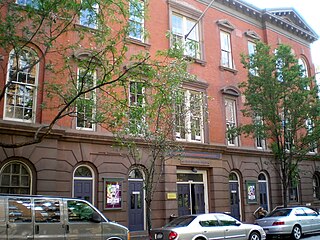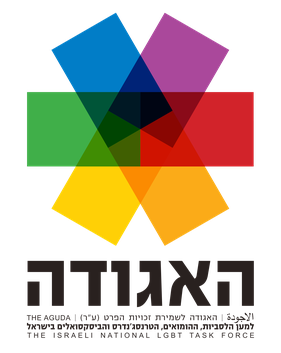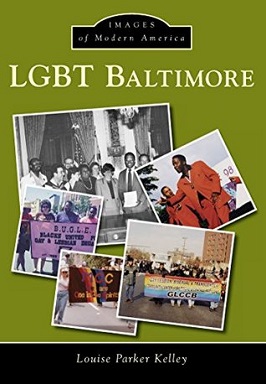
The LGBT community is a loosely defined grouping of lesbian, gay, bisexual, and transgender individuals united by a common culture and social movements. These communities generally celebrate pride, diversity, individuality, and sexuality. LGBT activists and sociologists see LGBT community-building as a counterweight to heterosexism, homophobia, biphobia, transphobia, sexualism, and conformist pressures that exist in the larger society. The term pride or sometimes gay pride expresses the LGBT community's identity and collective strength; pride parades provide both a prime example of the use and a demonstration of the general meaning of the term. The LGBT community is diverse in political affiliation. Not all people who are lesbian, gay, bisexual, or transgender consider themselves part of the LGBT community.

LGBT culture is a culture shared by lesbian, gay, bisexual, transgender, and queer individuals. It is sometimes referred to as queer culture, while the term gay culture may be used to mean either "LGBT culture" or homosexual culture specifically.
Gay Life was a weekly newspaper about gay culture published by the LGBT Community Center of Baltimore and Central Maryland. It was distributed in Baltimore, Maryland and throughout the Mid-Atlantic region.
The origin of the LGBT student movement can be linked to other activist movements from the mid-20th century in the United States. The Civil Rights Movement and Second-wave feminist movement were working towards equal rights for other minority groups in the United States. Though the student movement began a few years before the Stonewall riots, the riots helped to spur the student movement to take more action in the US. Despite this, the overall view of these gay liberation student organizations received minimal attention from contemporary LGBT historians. This oversight stems from the idea that the organizations were founded with haste as a result of the riots. Others historians argue that this group gives too much credit to groups that disagree with some of the basic principles of activist LGBT organizations.
The Utah Pride Center (UPC) is a tax-exempt nonprofit organization in Salt Lake City. It provides services, events and activities to lesbian, gay, bisexual and transgender (LGBT) people in Utah. The center manages annual and ongoing projects including the Utah Pride Festival.

The San Francisco Lesbian, Gay, Bisexual, and Transgender Pride Celebration, usually known as San Francisco Pride, is a pride parade and festival held at the end of June most years in San Francisco, California, to celebrate the lesbian, gay, bisexual, and transgender (LGBT) people and their straight allies.

The Lesbian, Gay, Bisexual & Transgender Community Center, commonly called The Center, is a nonprofit organization serving the lesbian, gay, bisexual and transgender (LGBT) population of New York City and nearby communities.
Over the course of its history, the LGBT community has adopted certain symbols for self-identification to demonstrate unity, pride, shared values, and allegiance to one another. These symbols communicate ideas, concepts, and identity both within their communities and to mainstream culture. The two symbols most recognized internationally are the pink triangle and the rainbow flag.

The Los Angeles LGBT Center is a provider of programs and services for lesbian, gay, bisexual and transgender people. The organization's work spans four categories, including health, social services, housing, and leadership and advocacy. The center is the largest facility in the world providing services to LGBT people.
Howard Brown Health is a nonprofit LGBTQ healthcare and social services provider that was founded in 1974. It is based in Chicago and was named after Howard Junior Brown.

The Aguda - The Association for LGBTQ Equality in Israel, known commonly as the Aguda, is an Israeli non-profit LGBT rights organization. Founded in 1975, the Aguda is based in Tel Aviv and focuses on volunteer-based initiatives and services for the LGBT community.
The Portal was a Baltimore LGBT community center for LGBT African Americans in the Baltimore, Maryland metropolitan area. It was owned and maintained by Empowering New Concepts, Inc. ENC, Inc. is a non-profit, 501(c)(3) community based organization established in 2001 by current CEO Rickie Green. Intended as a safe place for LGBT people of color, they offered health and safety information including AIDS awareness. The Portal "promotes stronger, more effective same gender loving communities of color through access to quality healthcare and economic and educational services." They served men who have sex with men as well as women who have sex with women.
Austin, Texas, has one of the most prominent and active LGBT populations in the United States. Austin was acclaimed by The Advocate in 2012 as part of its Gayest Cities in America, and was recognized by Travel and Leisure as one of America's Best Cities for Gay Travel. Much of Austin's gay nightlife scene is clustered around 4th Street. LGBT activism groups Atticus Circle and Equality Texas are headquartered in Austin.

LGBT Baltimore is a 2015 book about the culture and history of the LGBT community of Baltimore, Maryland, from the 1960s to the 2010s, written by lesbian and feminist activist Louise Parker Kelley. The book is part of Arcadia Publishing's series of pictorial histories.

LGBT culture in Baltimore, Maryland is an important part of the culture of Baltimore, as well as being a focal point for the wider LGBT community in the Baltimore metropolitan area. Mount Vernon, known as Baltimore's gay village, is the central hub of the city's lesbian, gay, bisexual, and transgender communities.
The Boston Alliance of Gay, Lesbian, Bisexual, and Transgender Youth (BAGLY) is a non-profit organization located in Boston that works to protect, expand, and raise awareness for the rights of gay, lesbian, bisexual, transgender, queer, and questioning youth (LGBTQ+). Founded by LGBTQ+ youth in 1980, it adopts a youth-led, adult-supported approach to better meet the varied needs of a wide demographic of LGBTQ+ youth in Greater Boston. BAGLY's stated goals are to create, sustain, and advocate for socially just and intersectional programs, policies, and services for the LGBTQ+ youth community, which they achieve through frequent community-based leadership development, health promotion, and social support programs.

In Washington, D.C., LGBT culture is heavily influenced by the U.S. federal government and the many nonprofit organizations headquartered in the city.








